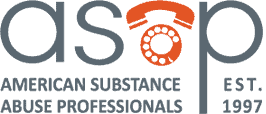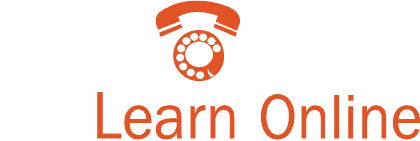By: The Centers for Disease Control and Prevention
Substance use disorders represent a pressing issue for American employers and workers. According to data from the 2018 National Survey on Drug Use and Health, approximately 70% of all adults with an alcohol or illicit drug use disorder are employed. Nearly 9% of all employed adults (approximately 13.6 million workers) have current alcohol or illicit drug use disorders, while a relatively equal number (approximately 13.4 million workers) report that they are in recovery or have recovered from a substance use problem. Workplaces are a critical point of contact for Americans struggling with or recovering from a substance use disorder. Ideally, workplaces will provide individual, family, and community support and improve the well-being of workers. Workplaces should create work environments that proactively prevent substance misuse, reduce stigma, and encourage treatment and sustained recovery.
In a Workplace Supported Recovery (WSR) Program, employers use evidence-based policies and programs to reduce multiple risk factors. These include helping to prevent initial substance use to decreasing the risk for substance misuse and its progression to a substance use disorder. WSR programs also take steps to help workers seek the care they need and provide assistance in recovery, to include staying at work or returning to work.
This is consistent with the broad perspective of the NIOSH Total Worker Health Program, which advocates for protection from work-related hazards and risks while embracing prevention efforts, to improve the overall well-being of workers. Applying the Total Worker Health approach to a WSR program would involve building a culture of ongoing support for all issues workers may face, both on the job and away from work.
What is a recovery-supportive workplace?
A recovery-supportive workplace aims to prevent exposure to workplace factors that could cause or perpetuate a substance use disorder while lowering barriers to seeking care, receiving care, and maintaining recovery. A recovery-supportive workplace educates its management team and workers on issues surrounding substance use disorders to reduce the all-too-common stigma around this challenge.
Elements of a Workplace Supported Recovery Program:
- Prevent work-related injuries and illnesses that could lead to the initiation of substance misuse
- Decrease difficult working conditions or work demands that might lead to daily or recurrent pain
Promote the use of alternatives to opioids for pain management associated with a workplace injury or illness - Provide information and access to care for a substance use disorder when it is needed, including access to medication-based or medication-assisted treatment, together with individual counseling
Support second-chance employment - Provide workplace accommodations and other return-to-work assistance
- Provide peer support and peer coaching to bolster the social supports available to workers in recovery
- Promote a work culture and climate that is supportive of workers in recovery (for example, awareness building, stigma reduction, and alcohol-free and health-focused work social events)
What is recovery?
In general terms, the concept of recovery represents a framework which recognizes that a substance use disorder is a chronic condition from which individuals can recover if given access to evidence-based treatments and long-term support. More specifically, the Office of the Surgeon General icon has defined recovery as “a process of change through which individuals improve their health and wellness, live a self-directed life, and strive to reach their full potential. Even individuals with severe and chronic substance use disorders can, with help, overcome their substance use disorder and regain health and social function. This is called remission. When those positive changes and values become part of a voluntarily adopted lifestyle, that is called ‘being in recovery.’”
Recovery represents a voluntary, long-term, and ongoing process that may involve cycles of treatment, remission, and recurrence before the person achieves stable recovery. More than just abstinence from substance use, recovery characterizes a lifestyle or journey—a broad attempt to build or rebuild a healthy, productive, and meaningful life.
Recovery capital represents the broad internal and external resources that support a person’s initiation and maintenance of recovery. Internal resources include higher levels of self-esteem and self-efficacy, motivation to change, functional coping styles, spirituality, and improved overall mental health. External resources include having a safe and stable place to live; education; training; employment; economic resources; social support from family, friends, co-workers, employers, and mutual-support groups; and access to community recovery-support organizations.
The path to recovery is unique to each individual, affected by the severity of the substance use disorder and the recovery capital available to the individual. Recovery may include, but does not require, formal treatment (with or without medication-assisted treatment), involvement in peer support networks, or a combination. The recovery process involves a series of temporal benchmarks based on length of abstention or controlled use and enhanced global functioning:
- early recovery (1 month to 12 months)
- sustained recovery (13 months to 5 years),
- stable recovery (over 5 years).
For those in stable recovery, the risk of a future recurrence in any year drops below 15%, which is about the same annual risk for a substance use disorder in the general population.
Cultivating a Supportive Workplace
Workplaces can engage in the following activities to mitigate the risk factors for initiation or perpetuation of a substance use disorder, help maximize the likelihood that employees in need will seek treatment, and support employees in their recovery efforts.
Policy. Workplace policies regarding substance use should be clear and transparent, defining the reasons for the policy, the prohibited substances and behaviors, the persons covered by the policy, and disciplinary consequences and appeals. Workplace substance use policies should be sensitive to the nature of recovery efforts. For example, a recovery-supportive policy will recognize that recovery may involve one or more recurrences and, therefore, additional or modified treatment. Also, because employment increases the likelihood of entering treatment and maintaining recovery efforts, workplace policies should support recovering individuals attempting to maintain employment and those hoping to enter or return to the workforce.
Education. Recovery-supportive workplaces provide training to all supervisors and employees. Trainings cover types of drugs (including alcohol), the health impacts of misusing them, how substance use can impact behavior and performance at work, and workplace policies involving substance use. In-person training is recommended as a best practice and online training should be provided when in-person training is not feasible.
Work environment. Recovery-supportive workplaces evaluate their work environments to minimize adverse working conditions that may contribute to higher levels of employee substance misuse. These include but are not limited to excessive work demands, exposure to interpersonal aggression at work, and dangerous working conditions. Workplaces may promote a quality work environment by establishing and maintaining potentially protective working conditions, such as fair and equitable treatment, respectful supervision, and promotion of supportive social connections and friendships among co-workers.
Stigma reduction. Individuals with a substance use disorder experience extreme levels of stigmatization (negative attitudes and stereotypes) that lead to prejudice, discrimination, social exclusion, and limited opportunities to participate fully in employment and other life roles. Stigmatization is also experienced by individuals who have recovered from a substance use disorder. Therefore, visible educational materials, as well as consistent discussions of the actual nature of substance use disorders, treatment, and recovery, may help reduce stigma and encourage entry into treatment and recovery. A key talking point in these materials and discussions is that a substance use disorder is not a moral failing and recovery is possible. The Center on Addiction provides recommendations icon for reducing stigma related to substance use disorders.
Recommendations for Reducing Stigma
In Work places:
- Provide training to managers and workers to overcome misunderstanding and bias against individuals with substance use disorder.
- Adopt health-promoting policies in the workplace to raise awareness and support workers and their family members struggling with a substance use disorder.
- Eliminate imprecise and pejorative terms from workplace language and instead adopt language that reflects a health perspective and is consistent with terms used to describe other health conditions (e.g., “person with substance use disorder”).
- Ensure that all substance use policies are informed by science and supported by data.
For Communities and Policymakers:
- Provide training and support to healthcare professionals to ensure the treatment of substance use disorder as a disease.
- Educate and train non–health care professionals (e.g., educators, law enforcement, and criminal justice personnel) who interact regularly with people at risk for substance use disorder or who have substance use disorder.
- Require and enforce standards to provide evidence-based substance use disorder care.
Resources and support. Inform employees about resources available through the employer or union for the treatment of substance misuse and disorders and recovery support. These resources may be part of a company employee assistance program and health insurance. If an employee assistance program and health insurance are not available, an information sheet on available resources in the community can be made available.
- Employers should consider evaluating their employee assistance and health insurance programs to make sure they have adequately trained personnel to deal effectively with substance use problems and have adequate coverage for multiple episodes of treatment (inpatient, outpatient, medication-assisted treatment), long-term follow-up, and recovery support (such as recovery coaching).
- Support programs utilizing co-workers or peers, with appropriate training, may offer valuable and confidential support such as sharing information and providing referrals, advocacy, and accountability. Peers are not usually formally trained to provide clinical services, but their skills and support may help lower barriers for seeking help and following through with treatment. Peer-based approaches or links to peer-based organizations and their programs may be of significant value to workers and employers when developing WSR programs.
Sensitivity to disparities. Workers across all age ranges, races, ethnicities, and organizational levels within the workforce can engage in substance misuse and develop substance use disorders. However, barriers to treatment and willingness to enter treatment and recovery may vary across these groups, based on factors such as religious and cultural norms or expectations, family history, age, and education. Employers should consider having expertise available in their employee assistance or health insurance programs to address differences across various demographic groups as needed.
Health and well-being programs. Providing programs that promote and support employee health, well-being, and work-life fit, as well as teach functional coping skills, may help employees develop and maintain their recovery efforts by building recovery capital.
Employment. Employment provides economic stability, a meaningful social role, and often direct access to treatment and recovery services. Employment also provides relevant sources of recovery capital that can motivate and maintain a desire for treatment and recovery. Recovery-supportive employers aim to preserve employment for those with a substance use disorder and provide second-chance employment for recovering individuals attempting to enter or reenter the workforce.
Workplace substance use climate. Evaluate and reduce current levels of physical availability of substances during the workday, as well as workplace norms and drinking rituals that support substance use. Physical availability includes the ease of obtaining alcohol and other drugs at work, bringing alcohol or other drugs into the workplace, or using substances during work hours or breaks. Substance use norms include descriptive norms, which represent the extent to which workers use substances while at work or work while impaired. Substance use norms also include injunctive norms, which represent the extent to which workers approve of using substances while at work or working while impaired. Although after-work drinking rituals are a way for co-workers to unwind and develop friendships, they can undermine the recovery efforts of co-workers who want to avoid alcohol use but, as a result, may experience social exclusion at work for not participating.
Focus on the future workforce. Roughly 90% of individuals with severe substance use disorders began using before the age of 18. Workplaces that employ adolescents and focus on prevention efforts aimed at employee substance misuse may circumvent problems in the next generation of workers. Additionally, a comprehensive WSR program could include prevention-focused resources specific to employees that are parents of adolescents.
Centers for Disease Control and Prevention (CDC). Workplace support recovery program. Retrieved from https://www.cdc.gov/niosh/topics/opioids/wsrp/default.html





